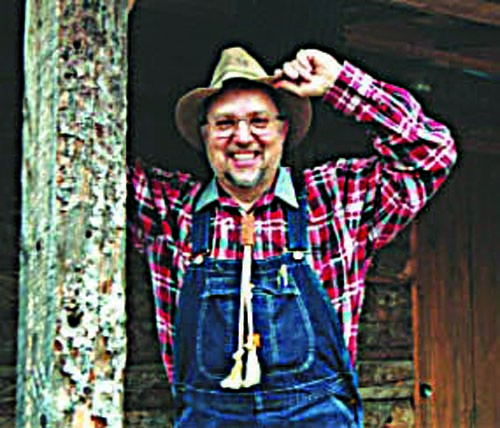Our new home is close to Tuttle Creek federal reservoir. It wuz built in the late 1950s to control flood damage to land and property down through the Kansas and lower Missouri rivers system from Manhattan, Kan., to St. Louis, MO.
I happened to attend the ribbon cutting opening of Tuttle Creek in the fall of 1960 and recall all the dignitaries proclaiming that the dam would provide flood control for at least 40 years. I don’t recall any mention of the rate of siltation in the reservoir or what would happen if and when siltation occurred.
Well, 65-years of history has shown that Tuttle Creek dam has indeed mitigated, but not prevented, flood damage. It has weathered several epic floods, but not unscathed. The catastrophic rainfall of 1993 almost washed away the spillway and threatened the dam itself. It took untold millions of federal dollars to rebuild and restore the spillway. Plus, additional federal millions were spent to re-strengthen the dam with deep-drilled and filled concrete shafts because it is built on an ancient earthquake zone.
In spite of all the turmoil, Tuttle Creek dam and lake persist today. However, a drive to the upstream end of lake reveals, not water, but hundreds of acres of deep silt. Millions of tons of silt. I’ve read that the lake has lost more than 30% of its water-retention capacity, from siltation, at normal conservation levels.
All the above discussion brings up the matter of how to solve the siltation problem in Tuttle Creek. It’s pretty obvious that “doin’ nuthin'” will end up with an all-silt, no-lake result in the next 50 years — give or take a decade or two.
So, I gave the matter a lot of thought and I think I’ve come up with a siltation solution. First, acknowledge that all that siltation washed into the lake from all the upstream pastures and farm fields in the entire watershed drainage.
Second, there’s no question but that the eroded land is now inferior to what it wuz previous to the erosion and needs to be restored.
Third, the obvious solution is to find a way for all that siltation to be returned to the pastures and fields where it eroded from. But, how?
Well, with most things being cyclical in nature, what goes around comes around again. Since it wuz federal dollars that originally built Tuttle Creek, and, since, it wuz federal dollars that have maintained the structure down through the years, it just makes sense that federal dollars can solve the siltation problem.
Here’s my suggestion: The federal government aspires for 100 percent employment of the national workforce. Well, there’s plenty of work to be done dredging the silt from Tuttle Creek. It needs to be hauled back upland to restore the inferior pastures. Then, fill all the eroded gullies with the silt — and, simultaneously, bury millions of invasive cedar trees in the process. Then, replant and restore the inferior pastures to the original prairie tallgrass species.
Just imagine all the heavy equipment that would have to be manufactured to complete the restoration of the prairie. Imagine how many cattle can be grazed on the restored pastures. Imagine all the crops that can be grown on the newly-deposited topsoil.
And, where does the labor force come from? Obviously, the workers come from the ranks of the unemployed from coast to coast and from the newly-arrived immigrants eager to pursue the American dream. The benefits seem endless to me.
And, since all new federal programs seem to need an initialized acronym name for public recognition, I’ve come up with the perfect name. The entire de-siltation program for Tuttle Creek should be known as the “Restore Inferior Pastures On Federal Funds” — or the RIPOFF program for short.
***
In my March 11 column, I completed reminiscing about the silly children’s songs that my Grandma Anne sang to me while playing the ragtime piano. I didn’t figger it would trigger any memories for any reader, but I wuz wrong.
One fella from Colorado, ol’ Ike N. Recawl, send me this email:
“Dear Milo. Your recent column in the Fence Post brought back many pleasant
memories to me. My maternal grandmother sang and taught several of her grandkids the animal fair song, which we sung in the round. I am now 84, so that was a long time ago, but I still sing it to this day. Thank you.”
Sounds like Ike’s grandma wuz as fun-loving as mine.
***
You never know how rural young’uns will react to new things. One rural dad took his 4- -year-old son for his first ride in an elevator. After the ride, he asked his son what he thought of the experience. His kid replied, “It wuz pretty funny and fun. We went into a little house and the upstairs came down to us.”
Another rural youngster came home from her first day in the first grade and her mother asked her, “What happened at school today?”
Her daughter replied, “Nothing really. A nice lady asked me if I knew how to spell ‘cat.’ So, I spelled it and she left me alone for the rest of the day.”
And, one more: The teacher of a rural third grade class decided to test the degree of sophistication of her pupils. She asked one ornery boy to name man’s best friend. And, to give him a little help she added, “The word begins with a ‘d.'”
Without a second thought, the kid replied, “Dame!”
***
A few days ago, the temperature wuz in the 60s. This Tuesday morning I woke up to a half-inch of new snow. The forecast for Thursday is in the 70s. So, I guess this is “yo-yo” weather.
Now, my words of wisdom for the week are: “There’s no sense in advertising your troubles. No one will buy them.”
Have a good un.





